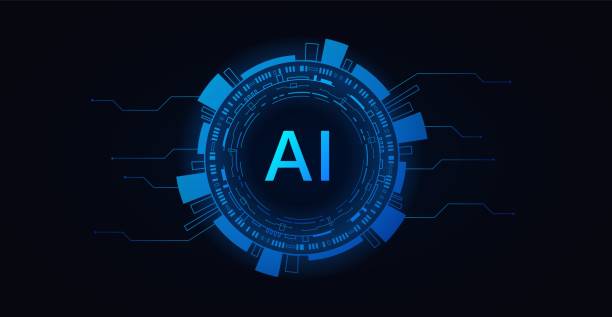What is On-Page SEO and Why Does It Matter?

On-Page SEO (#On-Page SEO) is a collection of techniques and actions performed within your website to improve the site’s ranking in search engines like Google.
This includes optimizing content, site structure, HTML tags, and more.
The importance of On-Page SEO stems from the fact that it helps search engines better understand your site’s content, and as a result, shows your site to more relevant users.
Without proper On-Page SEO, even the best content may not be seen in search results.
This is because search engines pay attention not only to the quality of the content, but also to how it is presented.
A site with strong On-Page SEO has a better chance of attracting organic traffic and increasing visitors.
Therefore, investing in On-Page SEO is a vital strategy for any business that wants to succeed in the online world.
In other words, On-Page SEO is like a strong infrastructure for your website building.
The better this infrastructure, the more stable and attractive the building (website) will be.
This includes optimizing page titles, meta descriptions, using appropriate keywords in content, improving page loading speed, and creating a proper internal linking structure.
By taking these actions, you not only help search engines, but also improve user experience.
Are you dissatisfied with the low conversion rate of visitors to customers on your online store?
Solve this problem forever with professional online store design by Rasaweb!
✅ Increase visitor-to-customer conversion rates
✅ Create an excellent user experience and build customer trust
⚡ Get free consultation
Keyword Research and Choosing the Best for On-Page SEO
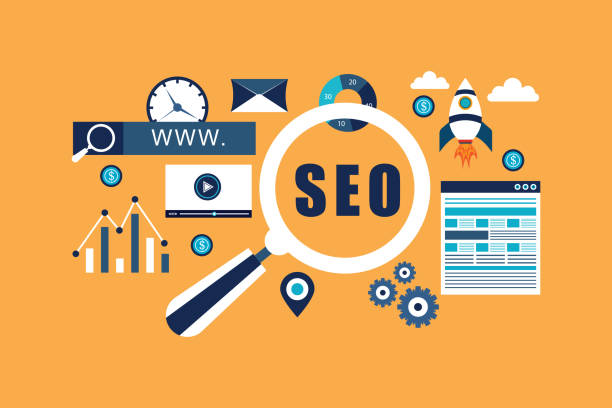
Keyword research is one of the most fundamental steps in On-Page SEO.
You need to find the words that users use to search for your products or services.
Various tools such as Ahrefs, Moz Keyword Explorer, and Ubersuggest help you find relevant keywords with suitable search volume.
After finding keywords, you need to prioritize them based on competition and relevance to your business.
Keywords with high competition may be harder to rank for, but long-tail keywords, which are more specific, usually have less competition and can attract more targeted traffic to your site.
For example, instead of the keyword “shoes,” use the phrase “buy men’s running shoes for running.”
When choosing keywords, also pay attention to user intent (Search Intent).
Is the user looking to buy a product, or just wants to get information? Your content should answer this intention.
By conducting thorough research and choosing the right keywords, you can optimize your content and increase your chances of being seen in search results.
This process not only helps improve On-Page SEO, but also brings higher quality traffic to your website.
Optimizing Title and Meta Descriptions
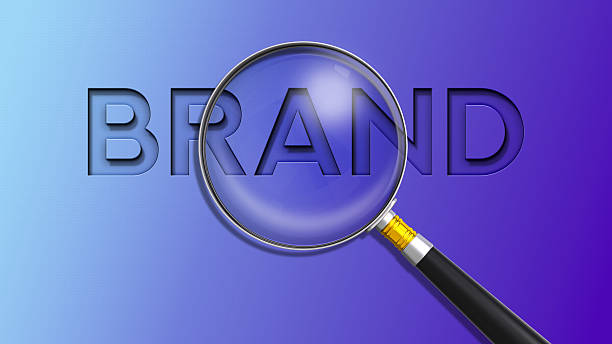
The page title (Title Tag) and meta description (Meta Description) are two important elements in On-Page SEO that help search engines and users better understand the content of the page.
The page title should be concise, engaging, and contain the main keyword.
Typically, the page title should be between 50 and 60 characters long to be fully displayed in search results.
The meta description is also a short summary of the page content that appears below the page title in search results.
The meta description should be attractive and persuasive to encourage users to click on your site’s link.
The meta description should be between 150 and 160 characters long.
Both of these elements should be uniquely optimized for each page to avoid creating duplicate content.
Using relevant keywords in the title and meta description can help improve your site’s ranking in search results.
However, you should avoid using too many keywords (Keyword Stuffing), as this can harm your site’s SEO instead of helping it.
The main goal should be to create an attractive and relevant title and description that is both optimized for search engines and appealing to users. On-Page SEO in this section tells you to use appropriate words in important sections.
| Element | Description | Example |
|---|---|---|
| Page Title | Concise, engaging, contains keyword | Buy Men’s Running Shoes – Best Prices | Online Store |
| Meta Description | Summary of page content, persuasive | Buy the best men’s running shoes at affordable prices from our online store. Fast shipping and money-back guarantee. |
Optimizing Content with Keywords

Optimizing content with keywords means strategically using keywords in text, subheadings, images, and other page elements.
Your content should be valuable, relevant, and responsive to the needs of users.
Using keywords naturally and without exaggeration helps search engines better understand the subject of the page.
When writing content, pay attention to the structure of the text.
Using subheadings (H1, H2, H3) helps organize content and shows search engines what topics different sections of the page are about.
Use relevant keywords in subheadings as well, but be careful not to overuse keywords.
Optimizing images is also an important part of content optimization.
Save your images with the appropriate file name (containing the keyword) and use the Alt tag to describe the image.
The Alt tag helps search engines understand the image and display it in image search results.
By following these tips, you can optimize your content and increase your chances of being seen in search results.
Good On-Page SEO is just that.
Is your online sales not as expected? With Rasaweb, solve the problem of low sales and poor user experience forever!
✅ Increase visitor-to-customer conversion rates
✅ Create a pleasant user experience and increase customer trust
⚡ Take action now to receive a free consultation!
The Importance of Internal Linking in SEO

Internal linking (Internal Linking) means creating links between different pages of your site.
This helps search engines better understand the structure of your site and identify more important pages.
Internal linking also helps users easily navigate your site and view more content.
When internal linking, use appropriate anchor text.
The anchor text should be relevant to the content of the page you are linking to.
For example, if you want to link to a page about “On-Page SEO Training”, use the anchor text “On-Page SEO Training”.
Internal linking should be done naturally and logically.
Avoid linking to irrelevant pages and try to create links that help users get more information.
By doing proper internal linking, you can improve your site’s ranking in search results and also improve user experience.
On-Page SEO says that internal links help the user.
Optimizing Site Loading Speed
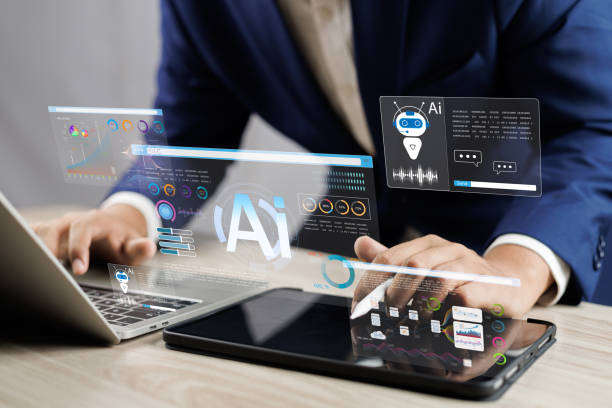
Site loading speed is one of the important factors in On-Page SEO and user experience.
Users expect web pages to load quickly, and if your site is slow, you may lose users.
Search engines also pay attention to site loading speed, and sites that are faster rank better.
To optimize site loading speed, you can use various tools such as Google PageSpeed Insights.
This tool shows you which parts of your site need improvement.
Some ways to improve site loading speed include compressing images, using a Content Delivery Network (CDN), optimizing code, and using caching.
Also, use a strong and reliable hosting.
Inappropriate hosting can reduce your site’s loading speed.
By optimizing site loading speed, you can improve user experience, increase conversion rates, and improve your site’s ranking in search results.
On-Page SEO helps you to be seen faster.
Responsive Design
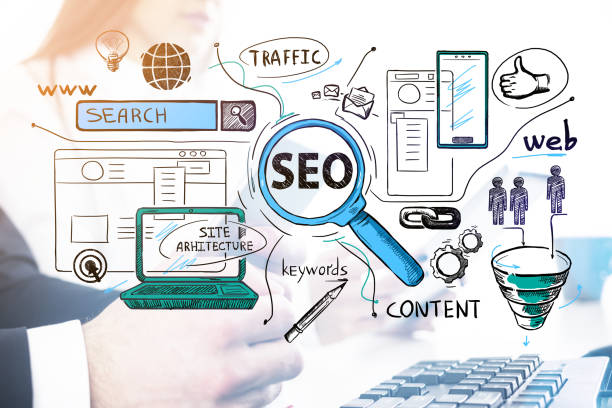
Responsive design (Responsive Design) means designing a site that automatically adapts to the screen size of different devices (such as mobile, tablet, and desktop).
Given that many users access the internet via mobile, responsive design is a necessity for On-Page SEO and user experience.
A responsive site allows users to easily navigate your site and view your content without needing to zoom or scroll horizontally.
Search engines also pay attention to responsive sites and prioritize them in search results.
To make sure your site is responsive, you can use various tools such as Google Mobile-Friendly Test.
This tool shows you how your site is displayed on mobile devices and what problems it has.
With responsive design, you can improve user experience and improve your site’s ranking in search results.
| Feature | Description |
|---|---|
| Flexible Design | Pages should automatically adapt to screen size. |
| Flexible Images | Images should automatically resize to display correctly on different devices. |
| Flexible Layout | Page elements should automatically rearrange on different devices. |
URL Optimization

URL optimization is another important aspect of On-Page SEO.
A suitable URL should be short, descriptive, and contain the main keyword.
The URL should show users and search engines what the page is about.
Avoid using long and complex URLs.
For example, instead of the URL “example.com/page?id=123”, use the URL “example.com/buy-running-shoes”.
URLs should be separated by a hyphen (-) for greater readability.
Also, the URL should be written in English, even if the content of the page is in another language.
By optimizing the URL, you can help search engines better understand the content of the page and improve your site’s ranking in search results.
A standard On-Page SEO pays attention to these points.
Does your current company website not reflect your brand’s credibility and power as it should? Rasaweb solves this challenge for you with professional company website design.
✅ Increase the credibility and trust of visitors
✅ Attract more targeted customers
⚡ Click to get a free consultation!
Using Schema Markup

Schema (Schema Markup) is a code that helps search engines get more information about the content of your page.
Using schema, you can provide search engines with information such as product name, price, rating, business hours, and more.
Schema can help improve the display of your site in search results.
For example, if you have a restaurant, you can use schema to display your restaurant’s hours, address, and menu in search results.
This can increase your site’s click-through rate (CTR) and attract more traffic to your site.
To use schema, you can use various tools such as Schema Markup Generator.
This tool helps you easily create schema code and add it to your site.
By using schema, you can help search engines better understand the content of your page and improve your site’s ranking in search results.
In On-Page SEO, the use of this tool is recommended.
Monitoring and Continuously Improving On-Page SEO

On-Page SEO is an ongoing process and requires continuous monitoring and improvement.
You should regularly review your site’s performance and make necessary changes if needed.
To monitor site performance, you can use various tools such as Google Analytics and Google Search Console.
These tools show you which pages of your site have more traffic, which keywords have the most visits, and what problems exist on your site.
By analyzing this information, you can identify your site’s strengths and weaknesses and improve your On-Page SEO strategy.
You should also pay attention to changes in search engine algorithms and adapt your site to these changes.
Search engines are constantly updating their algorithms, and if your site is not compatible with these changes, you may lose your ranking in search results.
By continuously monitoring and improving On-Page SEO, you can maintain your site’s ranking in search results and attract more traffic to your site.
Frequently Asked Questions
| Question | Answer |
|---|---|
| What is On-Page SEO? | On-page SEO involves optimizing elements that are directly in your control and within your website. Its goal is to help search engines better understand the content of the page and improve its ranking. |
| Why is On-Page SEO important? | On-page SEO provides clear signals to search engines about the content of the page, improves user experience, and increases the chance of attracting organic traffic. |
| What are the most important factors in On-Page SEO? | Keywords, Title Tag, Meta Description, URL structure, quality content, image optimization, and internal links are among the most important factors. |
| What is the role of the Title Tag in On-Page SEO? | The title tag is one of the most important signals for search engines and users that specifies the main topic of the page. It should include the main keyword and be engaging. |
| How important is the Meta Description? | The meta description does not directly affect ranking, but it can improve click-through rate (CTR) by encouraging users to click. |
| How to optimize images for On-Page SEO? | By using a descriptive file name, appropriate Alt Text containing keywords, compression to reduce size, and correct dimensions. |
| What effect do Internal Links have on SEO? | Internal links help search engines discover and index site pages, distribute authority (PageRank) throughout the site, and improve user navigation. |
| Is page load speed one of the On-Page SEO factors? | Yes, page load speed is a critical factor in On-Page SEO and user experience. Slower pages can lead to higher bounce rates and lower rankings. |
| What are the characteristics of quality content for On-Page SEO? | Quality content should be comprehensive, unique, relevant, reliable, readable, and fully answer the needs and questions of users. |
| How can keywords be used in content? | Keywords should be used naturally in the title, subheadings, first paragraph, body text, and alt text of images. Avoid Keyword Stuffing. |
And other services of Rasa Web Advertising Agency in the field of advertising
Intelligent customer journey map: A special service for growing customer acquisition based on an SEO-oriented content strategy.
Intelligent custom software: A combination of creativity and technology to improve SEO ranking through an SEO-oriented content strategy.
Intelligent website development: A new service to increase SEO ranking by designing an attractive user interface.
Intelligent advertising campaign: A combination of creativity and technology to manage campaigns by optimizing key pages.
Intelligent content strategy: Designed for businesses looking to manage campaigns by designing an attractive user interface.
And more than a hundred other services in the field of internet advertising, advertising consulting, and organizational solutions
Internet advertising | Advertising strategy | Advertorial
Resources
On-Page SEO Training from Aryanik
,What is On-Page SEO and why is it important? From Chetor
,What is On-Page SEO? From Mohammad Aryaei
,What is On-Page SEO? From Faraz SEO
? Are you looking for a big leap in the digital world? Digital Marketing Agency “Rasaweb Afarin” with expertise in Search Engine Optimization (SEO), professional management of social networks, and user-friendly website design, leads your business to success. With us, have a powerful and lasting presence in the online space.
📍 Tehran, Mirdamad Street, next to the Central Bank, South Kazerun Alley, Ramin Alley No. 6


